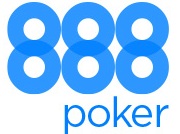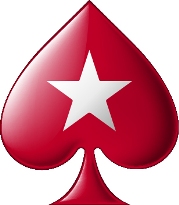In both varieties of Poker Omaha, some key questions to answer are the following: How close am I to the nut hand and how far do I need to go to get there? If I have the nut hand on the turn, do I have a redraw that can make me even better? How many players am I against? What do I know about how they play? Finally, the biggest key question:
What are the chances I’m playing for half or less of the pot?
You will recognize that this is exactly the same opening paragraph from the last chapter, with the exception of the word “turn” being substituted for the word “flop” in the second sentence. We did this intentionally. In a full 10-person game, you need to be planning on showing down the nuts far more often than not.
Omaha High Turns
We won’t bother to go over the first hand from the last chapter, as the nut straight would either hold up or it wouldn’t. Instead, let’s look at the second hand we discussed. The table below has the hands listed out as well as the relevant statistics. In this case, you will remember that the underdog hand with the pair of Sixes is now the strong favorite against the other two hands because it has the only set. In fact, no other hand even has two pair. Let’s make things a little more interesting, though, and put the 10♦ on the board for the turn.
Everything changes again! One hand folds as soon as possible, leaving three players. The new percentages are in Table below:
Omaha High Hand Percentages |
||
| Hand | Percentage of Money Won | |
| Flop (6♠8♣K♦) | Turn (10♦) | |
| A♦, A♣, 8♦, 10♠ | 16.0% | 36.0% |
| J♣, 9♣, T♥, 4♠ | 15.2% | 16.7% |
| 6♥, 6♦, K♣, J♥ | 62.2% | 47.3% |
| K♠, Q♠, 7♦, 7♣ | 6.5% | Folded |
While the set of Sixes is still the favorite, it will win less than 50 percent of all money, according to our simulation. That’s a really tough thing to see, but it all adds up. The hand with the pair of Aces is now able to win in several different ways. First, it could catch an Ace on the river, giving the player the best set. No one is holding JQ or 79, so there is no straight out there. The 6♦ and the 8♦ are already accounted for, so any diamond left in the deck is a winner. The hand now also has two pair, Tens, and Eights, which means that the four (three, really, as the T♥ is dead) Tens and Eights still out would give this hand a better full house than the Sixes full 66KJ would make. J9T4 is drawing to a non-diamond Seven or Queen, which gives it six outs (actually, it’s five outs, as the Q♠ is dead).
Since Omaha is about suffering, let’s talk about another turn card that really throws everything for a loop. In this case, let’s make it the 7♥.
Hey, that means the player with the pocket Sevens is now the dominant hand, right? Nope. In fact, it is now only good for about 12.5 percent of the money over time. The table below explains.
Omaha High Hand Percentages |
||
| Hand | Percentage of Money Won | |
| Flop (6♠8♣K♦) | Turn (7♥) | |
| A♦, A♣, 8♦, 10♠ | 16.0% | 0.0% |
| J♣, 9♣, T♥, 4♠ | 15.2% | 84.4% |
| 6♥, 6♦, K♣, J♥ | 62.2% | 3.1% |
| K♠, Q♠, 7♦, 7♣ | 6.5% | 12.5% |
The board is of four different suits, so there will be no flushes. The hand now comes down to a nut straight versus draws to full houses and quads, which makes it a huge favorite. The pair of Aces has no draw to a straight and cannot make a winning full house. The set of Sixes is now hoping for the fourth Six to come out, as that is the only way for it to win. What about a King to give it Kings full of Sixes? Good catch, but notice the hand with the pocket Sevens also has a King. If a King came on the river, the Sevens hand would use the King and one Seven to make Kings full of Sevens. Anything other than a Six pairing the board gives the set of Sevens the win, which the money says will happen 1/8 of the time. Everything else gives the straight the win.
We strongly suggest playing on practice software, such as Wilson Software or another maker’s product, a bunch or at least play at the lowest limit tables available, until you get a good grip on this and Omaha high-low. They are very tricky games, and the odds change drastically from card to card.
Omaha High-Low Turns
For this discussion, we’ll first look at a hand with a lot of capacity to win the low and a good but not huge chance to win the high. For example, you hold A♣, 2♣, 4♦, 5♦, which is a pretty good poker starting hand. You have a chance at the nut flush and can make all kinds of low combinations work. The flop comes, as shown here:


 The best draws are just that draws.
The best draws are just that draws.
This flop is very good in some ways and mediocre in others. The good news is that if a low makes, you will by definition have the nut low, as the A4, A5, or 45 combination will be best no matter what happens. The other good news is that an Ace or a Six will give you a straight. The bad news is that the low is not yet made, and you have only a Five-high, runner-runner flush draw. Let’s say you are up against one decent hand and one outrageously lucky one, such as A♥, 5♥, J♠, Q♠ and 4♠, 5♠, T♦, T♣.
This is exactly the insane kind of situation in which you will find yourself in an online card room, so get used to stuff like this happening. It drives you crazy. Let’s say the turn card brings the 7♥ or the 6♥.
What a difference a card’s rank can make! The table below shows how the money is distributed.
In either case, the second hand will be picking up the nut flush draw and will make the second nut low. Unfortunately, neither is good as of the turn and both need to rely on the river to improve in order to collect any money. Because the third hand already has a set of Tens and can split the low if an Ace counterfeits the first hand on the river, it is in great shape to win the majority of the money. If the 6♥ comes, though, it’s an entirely different situation. In this case, the first hand will have made the nut-nut hand as of the turn, in that it will have the best low and high hand (A2 and Six-high straight). It needs to dodge a heart and a card that pairs the board, but it will, at worst, split the low, and in this case, it will split the high because the idiot who played 45TT will also have the best straight. Wow…but what can you do?
Omaha High-Low Hand Percentages |
|||
| Hand | Percentage of Money Won | ||
| Flop (2♦, 3♠, T♥) | Turn (7♥) | Turn (6♥) | |
| A♣, 2♣, 4♦, 5♦ | 32.8% | 33.3% | 63.9% |
| A♥, 5♥, J♠, Q♠ | 13.6% | 10.5% | 9.7% |
| 4♠, 5♠, T♦, T♣ | 53.6% | 56.2% | 26.4% |
A much more common occurrence is for a flop to hit you pretty well but not perfectly. For instance, assume you have A♥, 2♥, K♠, 5♠, you are against A♦, 2♦, J♠, Q♠ and 9♥, T♥, A♠, K♥, and you get the flop shown here:


 You’re doing well, but you’re not there yet
You’re doing well, but you’re not there yet
The next table lists the percentages if the turn brings the K♣.
Omaha High-Low Hand Percentages |
|||
| Hand | Percentage of Money Won | ||
| Flop (2♦, 3♠, T♥) | Turn (7♥) | Turn (6♥) | |
| A♣, 2♣, 4♦, 5♦ | 32.8% | 33.3% | 63.9% |
| A♥, 5♥, J♠, Q♠ | 13.6% | 10.5% | 9.7% |
| 9♥, T♥, A♠, K♥ | 53.6% | 56.2% | 26.4% |
This is one of those uncommon hands in which no one will likely make a straight or a full house. The simulation shows that the top hand will win the entire low half of the pot, unless a two comes on the river, in which case it will get quartered. Amazingly, it will also be in line to split the high with the bottom hand, with a pair of Kings and an Ace kicker. If a Nine or Ten comes, the bottom hand wins with Kings and Nines/Tens. If a Deuce or a Five comes, the first-hand wins with Kings and Deuces/Fives. The second hand will tie the low if a Deuce comes and will win the high if a Ten comes, giving it a straight. It will also win if a third Queen or a second Jack comes, which would give it trips and Queens over Jacks, respectively.










